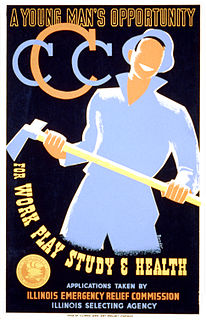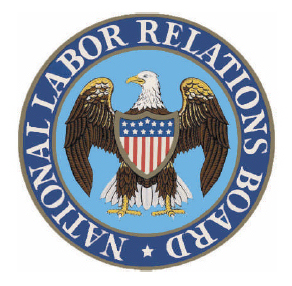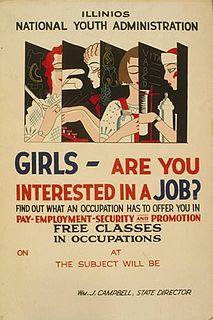 W
WThe alphabet agencies were the U.S. federal government agencies created as part of the New Deal of President Franklin D. Roosevelt. The earliest agencies were created to combat the Great Depression in the United States and were established during Roosevelt's first 100 days in office in 1933. In total, at least 69 offices were created during Roosevelt's terms of office as part of the New Deal. Some alphabet agencies were established by Congress, such as the Tennessee Valley Authority. Others were established through Roosevelt executive orders, such as the Works Progress Administration and the Office of Censorship, or were part of larger programs such as the many that belonged to the Works Progress Administration. Some of the agencies still exist today, while others have merged with other departments and agencies or were abolished.
 W
WThe Bonneville Power Administration (BPA) is an American federal agency operating in the Pacific Northwest. BPA was created by an act of Congress in 1937 to market electric power from the Bonneville Dam located on the Columbia River and to construct facilities necessary to transmit that power. Congress has since designated Bonneville to be the marketing agent for power from all of the federally owned hydroelectric projects in the Pacific Northwest. Bonneville is one of four regional Federal power marketing agencies within the U.S. Department of Energy (DOE).
 W
WThe California State Relief Administration (SRA), created in 1935, was the successor to the State Emergency Relief Administration (SERA), created in 1933. The agencies were responsible for distributing state and federal funds to improve conditions in California during the Great Depression, and administered unemployment relief.
 W
WThe Civil Works Administration (CWA) was a short-lived job creation program established by the New Deal during the Great Depression in the United States to rapidly create mostly manual-labor jobs for millions of unemployed workers. The jobs were merely temporary, for the duration of the hard winter of 1933–34. President Franklin D. Roosevelt unveiled the CWA on November 8, 1933, and put Harry L. Hopkins in charge of the short-term agency.
 W
WThe Civilian Conservation Corps (CCC) was a voluntary public work relief program that operated from 1933 to 1942 in the United States for unemployed, unmarried men ages 18–25 and eventually expanded to ages 17–28. Robert Fechner was the first director of this agency, succeeded by James McEntee following Fechner's death. The CCC was a major part of President Franklin D. Roosevelt's New Deal that provided manual labor jobs related to the conservation and development of natural resources in rural lands owned by federal, state, and local governments. The CCC was designed to provide jobs for young men and to relieve families who had difficulty finding jobs during the Great Depression in the United States. Maximum enrollment at any one time was 300,000. Through the course of its nine years in operation, 3 million young men participated in the CCC, which provided them with shelter, clothing, and food, together with a wage of $30 per month.
 W
WThe Farm Security Administration (FSA) was a New Deal agency created in 1937 to combat rural poverty during the Great Depression in the United States. It succeeded the Resettlement Administration (1935–1937).
 W
WThe Federal Art Project (1935–1943) was a New Deal program to fund the visual arts in the United States. Under national director Holger Cahill, it was one of five Federal Project Number One projects sponsored by the Works Progress Administration (WPA), and the largest of the New Deal art projects. It was created not as a cultural activity, but as a relief measure to employ artists and artisans to create murals, easel paintings, sculpture, graphic art, posters, photography, theatre scenic design, and arts and crafts. The WPA Federal Art Project established more than 100 community art centers throughout the country, researched and documented American design, commissioned a significant body of public art without restriction to content or subject matter, and sustained some 10,000 artists and craft workers during the Great Depression.
 W
WThe Federal Communications Commission (FCC) is an independent agency of the United States government that regulates communications by radio, television, wire, satellite, and cable across the United States. The FCC maintains jurisdiction over the areas of broadband access, fair competition, radio frequency use, media responsibility, public safety, and homeland security.
 W
WThe Federal Crop Insurance Corporation (FCIC) is a wholly owned government corporation managed by the Risk Management Agency of the United States Department of Agriculture. FCIC manages the federal crop insurance program, which provides U.S. farmers and agricultural entities with crop insurance protection.
 W
WThe Federal Deposit Insurance Corporation (FDIC) is one of two agencies that provide deposit insurance to depositors in U.S. depository institutions, the other being the National Credit Union Administration, which regulates and insures credit unions. The FDIC is a United States government corporation providing deposit insurance to depositors in U.S. commercial banks and savings banks. The FDIC was created by the 1933 Banking Act, enacted during the Great Depression to restore trust in the American banking system. More than one-third of banks failed in the years before the FDIC's creation, and bank runs were common. The insurance limit was initially US$2,500 per ownership category, and this was increased several times over the years. Since the passage of the Dodd–Frank Wall Street Reform and Consumer Protection Act in 2011, the FDIC insures deposits in member banks up to US$250,000 per ownership category.
 W
WThe Federal Emergency Relief Administration (FERA) was a program established by President Franklin Roosevelt in 1933, building on the Hoover administration's Emergency Relief and Construction Act. It was replaced in 1935 by the Works Progress Administration (WPA).
 W
WThe Federal Music Project (FMP), part of the Federal government of the United States New Deal program Federal Project Number One, employed musicians, conductors and composers during the Great Depression. In addition to performing thousands of concerts, offering music classes, organizing the Composers Forum Laboratory, hosting music festivals and creating 34 new orchestras, employees of the FMP researched American traditional music and folk songs, a practice now called ethnomusicology. In the latter domain the Federal Music Project did notable studies on cowboy, Creole, and what was then termed Negro music. During the Great Depression, many people visited these symphonies to forget about the economic hardship of the time. In 1939, the FMP transitioned to the Works Progress Administration's Music Program, which along with many other WPA projects, was phased out in the midst of World War II.
 W
WThe Federal Security Agency (FSA) was an independent agency of the United States government established in 1939 pursuant to the Reorganization Act of 1939. For a time, the agency oversaw food and drug safety as well as education funding and the administration of public health programs and the Social Security old-age pension plan.
 W
WThe Federal Surplus Commodities Corporation was one of the so-called alphabet agencies set up in the United States during the 1930s as part of President Franklin D. Roosevelt's New Deal. Created in 1933 as the Federal Surplus Relief Corporation, its name was changed by charter amendment on November 18, 1935. In 1937 its administration was placed within the United States Department of Agriculture. In 1940 it was combined with other USDA initiatives to form the Surplus Marketing Administration. It was abolished February 23, 1942, with the creation of the Agricultural Marketing Administration.
 W
WThe Federal Theatre Project was a theatre program established during the Great Depression as part of the New Deal to fund live artistic performances and entertainment programs in the United States. It was one of five Federal Project Number One projects sponsored by the Works Progress Administration, created not as a cultural activity but as a relief measure to employ artists, writers, directors, and theater workers. It was shaped by national director Hallie Flanagan into a federation of regional theaters that created relevant art, encouraged experimentation in new forms and techniques, and made it possible for millions of Americans to see live theatre for the first time. Although The Federal Theatre project consumed only 0.5% of the allocated budget from the WPA and was widely considered a commercial and critical success, the project became a source of heated political contention. The House Un-American Activities Committee claimed the content of the FTP's productions were supporting racial integration between black and white Americans while also perpetuating an anti-capitalist communist agenda and cancelled funding for the project on June 30, 1939.
 W
WThe Federal Writers' Project (FWP) was a federal government project in the United States created to provide jobs for out-of-work writers during the Great Depression. It was part of the Works Progress Administration (WPA), a New Deal program. It was one of a group of New Deal arts programs known collectively as Federal Project Number One. The FWP employed thousands of people and produced hundreds of publications including state guides, city guides, local histories, oral histories, ethnographies, and children's books. In addition to writers, the Project provided jobs to unemployed librarians, clerks, researchers, editors, and historians.
 W
WThe Historical Records Survey (HRS) was a project of the Works Progress Administration New Deal program in the United States. Originally part of the Federal Writers' Project, it was devoted to surveying and indexing historically significant records in state, county and local archives. The official mission statement was the "discovery, preservation, and listing of basic materials for research in the history of the United States."
 W
WThe Home Owners' Loan Corporation (HOLC) was a government-sponsored corporation created as part of the New Deal. The corporation was established in 1933 by the Home Owners' Loan Corporation Act under the leadership of President Franklin D. Roosevelt. Its purpose was to refinance home mortgages currently in default to prevent foreclosure, as well as to expand home buying opportunities.
 W
WThe National Labor Relations Board (NLRB) is an independent agency of the federal government of the United States with responsibilities for enforcing U.S. labor law in relation to collective bargaining and unfair labor practices. Under the National Labor Relations Act of 1935 it supervises elections for labor union representation and can investigate and remedy unfair labor practices. Unfair labor practices may involve union-related situations or instances of protected concerted activity. The NLRB is governed by a five-person board and a General Counsel, all of whom are appointed by the President with the consent of the Senate. Board members are appointed to five-year terms and the General Counsel is appointed to a four-year term. The General Counsel acts as a prosecutor and the Board acts as an appellate quasi-judicial body from decisions of administrative law judges.
 W
WThe National Recovery Administration (NRA) was a prime agency established by U.S. president Franklin D. Roosevelt (FDR) in 1933. The goal of the administration was to eliminate "cut throat competition" by bringing industry, labor, and government together to create codes of "fair practices" and set prices. The NRA was created by the National Industrial Recovery Act (NIRA) and allowed industries to get together and write "codes of fair competition." The codes intended both to reduce "destructive competition" and help workers to set minimum wages and maximum weekly hours, as well as minimum prices at which products could be sold. The NRA also had a two-year renewal charter and was set to expire in June 1935 if not renewed.
 W
WThe National Youth Administration (NYA) was a New Deal agency sponsored by the Presidency of Franklin D. Roosevelt in the United States that focused on providing work and education for Americans between the ages of 16 and 25. It operated from June 26, 1935 to 1939 as part of the Works Progress Administration (WPA) and included a Division of Negro Affairs headed by Mary McLeod Bethune who worked at the agency from 1936 to 1943. Following the passage of the Reorganization Act of 1939, the NYA was transferred from the WPA to the Federal Security Agency. In 1942, the NYA was transferred to the War Manpower Commission (WMC). The NYA was discontinued in 1943.
 W
WPublic Works Administration (PWA), part of the New Deal of 1933, was a large-scale public works construction agency in the United States headed by Secretary of the Interior Harold L. Ickes. It was created by the National Industrial Recovery Act in June 1933 in response to the Great Depression. It built large-scale public works such as dams, bridges, hospitals, and schools. Its goals were to spend $3.3 billion in the first year, and $6 billion in all, to provide employment, stabilize purchasing power, and help revive the economy. Most of the spending came in two waves in 1933–35, and again in 1938. Originally called the Federal Emergency Administration of Public Works, it was renamed the Public Works Administration in 1935 and shut down in 1944.
 W
WThe Public Works of Art Project (PWAP) was a program to employ artists, as part of the New Deal, during the Great Depression. It was the first such program, running from December 1933 to June 1934. It was headed by Edward Bruce, under the United States Treasury Department and paid for by the Civil Works Administration.
 W
WThe Puerto Rico Reconstruction Administration (PRRA) was one of the alphabet agencies of the New Deal established by the administration of President Franklin Delano Roosevelt. Created on May 28, 1935, the PRRA's first directors included American journalist and politician Ernest Gruening and Puerto Rican educator and politician Carlos Chardón. Falling under the authority of the Department of the Interior and the Farm Security Administration (FSA) its primary goals were to establish long term economic stability in Puerto Rico during the Great Depression through job creation, land distribution, public works projects, as well as environmental and health initiatives. The agency was officially liquidated on February 15, 1955.
 W
WThe Resettlement Administration (RA) was a New Deal U.S. federal agency created May 1, 1935. It relocated struggling urban and rural families to communities planned by the federal government. On September 1, 1937, it was succeeded by the Farm Security Administration.
 W
WThe United States Social Security Administration (SSA) is an independent agency of the U.S. federal government that administers Social Security, a social insurance program consisting of retirement, disability, and survivor benefits. To qualify for most of these benefits, most workers pay Social Security taxes on their earnings; the claimant's benefits are based on the wage earner's contributions. Otherwise benefits such as Supplemental Security Income (SSI) are given based on need.
 W
WThe Subsistence Homesteads Division of the US Department of the Interior was a New Deal agency that was intended to relieve industrial workers and struggling farmers from complete dependence on factory or agricultural work. The program was meant to provide relatively low cost homesteads, including a home and small plots of land that would allow them to sustain themselves; through the program, thirty-four communities were built. Unlike subsistence farming, subsistence homesteading is based on a family member or members having part-time, paid employment.
 W
WThe Tennessee Valley Authority (TVA) is a federally owned corporation in the United States created by congressional charter on May 18, 1933, to provide navigation, flood control, electricity generation, fertilizer manufacturing, and economic development to the Tennessee Valley, a region particularly affected by the Great Depression. Senator George W. Norris (R-Nebraska) was a strong sponsor of this project. TVA was envisioned not only as a provider, but also as a regional economic development agency that would use federal experts and rural electrification to help modernize the rural region's economy and society.
 W
WThe U.S. Securities and Exchange Commission (SEC) is a large independent agency of the United States federal government that was created following the stock market crash in the 1920s to protect investors and the national banking system. The SEC holds primary responsibility for enforcing the federal securities laws, proposing securities rules, and regulating the securities industry, which is the nation's stock and options exchanges, and other activities and organizations, including the electronic securities markets in the United States.
 W
WThe United States Housing Authority, or USHA, was a federal agency created during 1937 within the United States Department of the Interior by the Housing Act of 1937 as part of the New Deal.
 W
WThe Works Progress Administration was an American New Deal agency, employing millions of job-seekers to carry out public works projects, including the construction of public buildings and roads. It was established on May 6, 1935, by presidential order, as a key part of the Second New Deal.